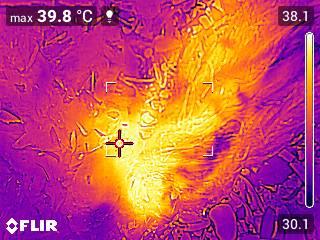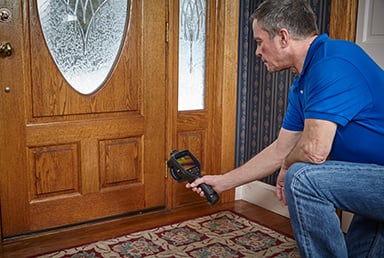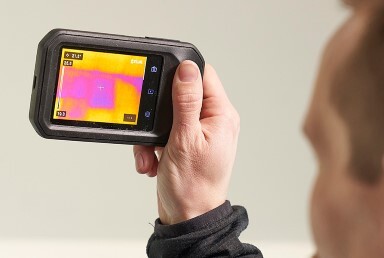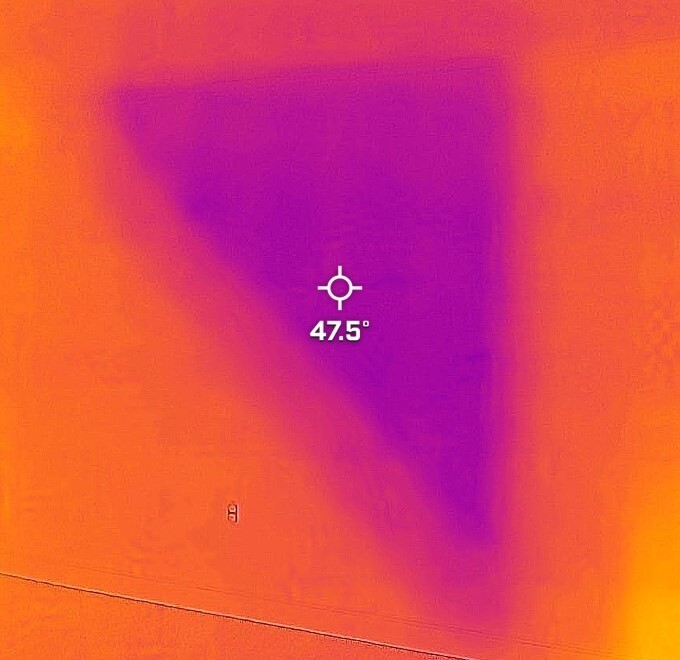Regular inspections beyond what we can see on the outside are necessary to keep any house maintained. Thankfully, thermal cameras enable us to see much more than our naked eyes could. Inspectors can save time by knowing what to look for and prevent issues from ever occurring, such as pests hiding in walls, air leaks that cause drafts, or overheating electrical systems. Let’s discuss these three potential problems and how your thermal camera can detect them.
One of the least destructive methods for conducting a pest inspection is thermal imaging. Although you shouldn’t anticipate seeing them moving around, things like rodent nests frequently produce enough heat over time to begin warming the outer wall. Insulation that is missing and entryway-indicating holes in walls are two additional indicators we can look for. In order to make room for themselves, rodents frequently move insulation, which results in cold spots in a house.

Rodents and termites can both be found in the same places, but they leave slightly different traces. They frequently produce erratic heat patterns on the surfaces of walls, ceilings, and floors as a result of their digestive systems releasing carbon dioxide. Additionally, inspectors can search for strange moisture stains on walls that termites leave behind when they build mud tubes.
An entry-level camera like the FLIR ONE Pro should be able to detect heat easily from larger pests like rodents. A higher resolution camera, such as the FLIR Cx-Series, Ex-Series, or Exx-Series cameras, may be necessary to detect smaller pests like termites and wood-boring beetles. In some circumstances, it might be worthwhile to drill a small hole in a wall to get a close-up view of a possible rat or beehive nest. With a thermal videoscope like the FLIR VS290-21, a pest control expert can take infrared images or videos of what’s hiding inside walls without the use of additional lighting.

Now let’s look at air leaks and determine what is causing drafts in the house. However, there is one thing you should be aware of before performing an air leak inspection: the temperature difference between the inside and outside should be at least 10°C (18°F). We advise beginning the inspection early in the day to avoid the house becoming too warm. Once the temperature difference has been confirmed, we can begin to investigate some of the usual offenders. The following are excellent places to start: doors, windows, exterior outlets, and ducts. A thermal camera like the FLIR C5 or E8-XT can easily reveal any areas where outside air is seeping in when inspecting them. Check for any exterior doors that are allowing warm air to escape through the bottom and add door sweeps. Exterior doors don’t always create a good seal between the home and the outside.

Air leaks frequently result from missing insulation as well. Attics, walls, floors, foundations, crawl spaces, and ducts are a few places you should check. Renovations frequently result in insulation gaps, whether from contractors drilling holes or simply moving insulation. It might be a good idea to look for any cold spots in a client’s newly renovated home. Again, a FLIR VS290-21 or VS290-33 may be useful in this situation because the extended probes, which can extend up to 2 meters (6.5 feet) in length, can access attics or crawl spaces that may be more difficult for you to access. Since foundations frequently go without insulation, the basement is another important area to inspect. Last but not least, attic doors are frequently left open, which lets air flow between the house’s roof and attic. If the door needs a cover to stop air flow, it should be simple to tell from a quick glance with a thermal camera.

After discussing pests and air leaks, let’s discuss some typical electric issues. Power systems frequently appear fine at first glance, but thermal cameras enable us to get a quick glance as issues develop. It should be possible to find any loose power connections by thermally inspecting the breaker box, outlets, electronics, thermostat, and any other electric systems. These problems can make circuits produce much more heat than they should, making them simple to spot with thermal imaging. Both external vibrations from nearby heavy machinery and connections expanding and contracting due to heat are potential causes of loose electric connections. If you notice any abnormal odors that might be coming from burning material or any discoloration near an electric system, you might also want to perform a quick thermal inspection.
We can non-destructively scan our surroundings with thermal imaging to look for pests, air leaks, or loose electrical connections. These fixes can frequently result in lower energy costs, and they might even protect your clients from a future catastrophe.
Copyright © 2025 Butler & Land Technologies, LLC. All Rights Reserved.
Web Design by Red Spot Design. Return & Refund Policy, Terms & Conditions